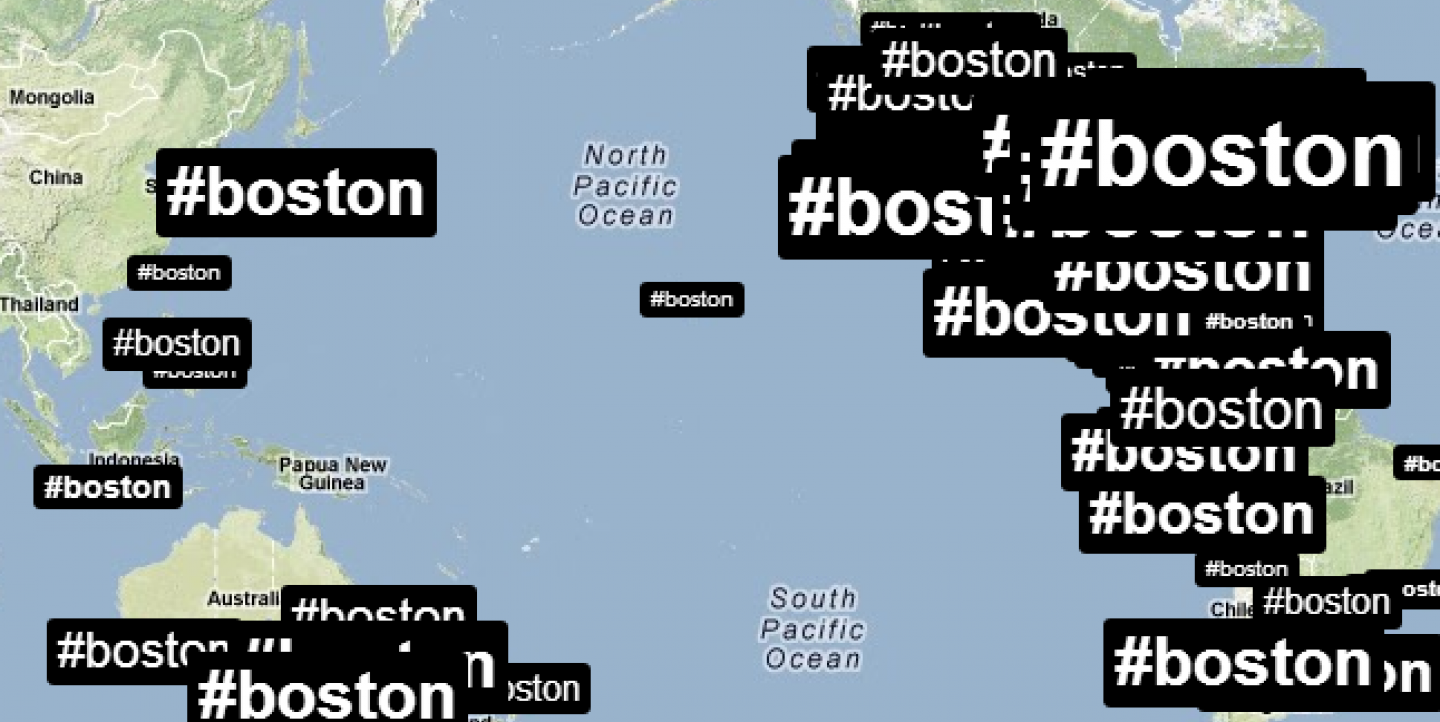The Boston Marathon bombing posed a series of challenges for journalists covering the scene: interviewing trauma victims with tact, reporting on the suspects, verifying information and more.
As cell phone service was rumored to have shut down, journalists and spectators alike took to social media and online tools to report the scene.
Twitter was active worldwide yesterday, with the #BostonMarathon hashtag trending around the globe. Trendsmap tracked Twitter activity in real time, showing spikes in Western Europe, South Africa, Australia, East Asia and the Middle East.
The Boston Globe, Wall Street Journal and the New York Times all suspended their websites' paywalls to allow more accurate information to be spread, but that didn't prevent a dose of bad Twitter intel. The New York Post's unverified report that law enforcement had a Saudi national in custody received a lot of traction online. One Boston Marathon parody account promised to donate $1 for each retweet, receiving about 65,000 retweets before Twitter deleted it. Another now-suspended account, @HopeforBoston, posted images of children while claiming they were running for victims of the Newtown school shooting; the fake images received more than 100,000 retweets.
The funnel effect of Twitter is a reminder that, in times of tragedy, sometimes it's better to say nothing. "What’s worse than the misinformation...was the short form instant punditry. Blowhards didn’t wait to weigh in with theories and blame and predictions," Mat Honan wrote in this Wired piece "Whether it’s a rush to assign blame, a speculation regarding motive, or an I-told-you-so matters little. That kind of stuff can play badly enough in a next day op-ed, but in an unedited 140-character tweet issued shortly after some terrible thing has just gone down, it’s pure poison."
A Vine video of the explosions has gone viral. A Boston Marathon volunteer hosted a Reddit AMA on site. Foursquare co-founder Dennis Crowley, who ran the marathon, live-tweeted events from the scene, and YouTube set up a dedicated channel compiling all videos related to the events, including President Obama's press statement.
Google launched its Person Finder, offering a place for people to seek and post information about missing people. Boston.com created a Google Docs spreadsheet to connect people who needed a place to stay with people who could host stranded runners. The Guardian used Tableau to show how the offers of accommodation changed over time. The Guardian also created an interactive map to show the explosion locations from a birds-eye view.
For an in-depth Storify account of other news outlet's coverage of the Boston Marathon bombing, check out the Poynter post here.
IJNet Editorial Assistant Margaret Looney writes about the latest media trends, reporting tools and journalism resources.
Image screengrabbed from Trendsmap.
[Updated 4/17/13 9:55 EST]

